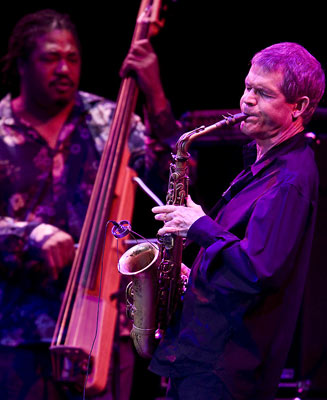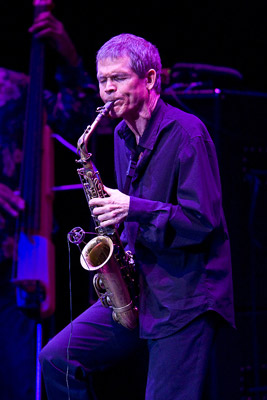David Sanborn
At the Lobero Theatre, Saturday, August 16.

It’s a waste of words to discuss how well David Sanborn plays saxophone; his career of nearly 50 years, the 24 albums he’s released, and the high demand he’s in from countless other big-name artists who want only the finest sax on their tracks testify that the man can play. And play he did at the Lobero Theatre on Saturday night, weaving through the stylistic phases of his career, all the way from the laidback jazz-pop of the 1970s to the surprisingly nuanced material with which he succeeded on smooth jazz radio in the 1980s to the interpretations of both well-known and obscure jazz and soul standards that he’s been recording lately.

With a four-piece band behind him, Sanborn covered the likes of Ben Tucker’s “Comin’ Home Baby” and Charlie Chaplin’s surprisingly modern-sounding “Smile.” The best number from Sanborn’s own back catalogue was the atmospheric “Maputo,” the opening track on Double Vision, the 1986 album recorded with keyboardist Bob James that proved that the then-new “smooth jazz” radio format need not entail blandness. Promoting Here and Gone, a brand-new release that pays tribute to the music of Ray Charles, Sanborn put his own spin on the work of the late master, all the while recalling Hank Crawford, Charles’s saxophonist and one of the musicians who inspired the young Sanborn to follow his dream.
“Often imitated but never duplicated” is a cliche, but Sanborn’s playing actually merits this praise. His trademark nearly vocal wail on alto just doesn’t sound the same coming out of someone else’s horn. Sanborn’s uniqueness shines in a live setting, supported by a bassist, guitarist, drummer, and keyboardist all more than up to the task. It’s no mean feat simply to back up one of the most respected saxophonists in the business, but it’s something else altogether when he gives you an extended solo. Each player got the chance to wow the audience with a solo at least once, and this transformed the evening from a pitch-perfect Sanborn song recital into a more spontaneous experience. Artists of Sanborn’s stripe too often forget that sounding as good as you did on the CD is fine, but you’re not really putting on a show until you also steer the music in unexpected directions.



